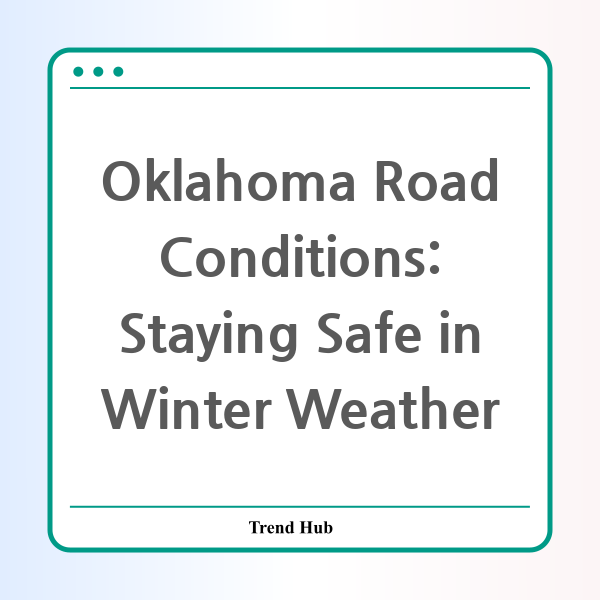* This website participates in the Amazon Affiliate Program and earns from qualifying purchases.

As winter weather grips the state of Oklahoma, dangerous road conditions have become the norm. The recent icy temperatures and snowfall have created a challenging environment for drivers, particularly in metropolitan areas. Are you prepared to navigate these treacherous roads? Let's explore the current conditions, the risks involved, and essential safety tips for driving during this wintery season.
### Current Road Conditions
This week, Oklahoma experienced a significant drop in temperatures accompanied by the arrival of winter weather. Many regions are reporting slick and hazardous road surfaces caused by ice and snow accumulation. The Oklahoma City metro area, in particular, is facing severe challenges, with wind chills plummeting to 20 degrees below zero. Such conditions have resulted in numerous school closures and continued virtual learning days as safety takes precedence.
The Oklahoma Department of Transportation (ODOT) has been actively monitoring road status, and while no new snowfall is expected, icy patches persist on many highways and streets. Drivers are urged to prepare for black ice, which can be deceptively difficult to detect. ODOT's message is clear: patience and caution are vital when navigating these winter roads.
### Accidents on the Rise
With the hazardous conditions, reports of accidents have surged. The Oklahoma Highway Patrol (OHP) has observed a troubling trend: many drivers are attempting to travel too quickly for the present weather challenges. Numerous incidents, including jackknifed semis and traffic collisions, have occurred due to vehicles losing traction on icy surfaces. This underscores the importance of adjusting driving habits during winter weather. Remember, speed limits are meant for ideal conditions; during winter weather, a lower speed may be necessary to maintain safety.
### Safety Tips for Driving in Winter Conditions
To help mitigate risks associated with winter driving, consider the following safety tips:
- Reduce Speed: Always drive slower than usual in icy conditions. This allows for better control and increased reaction time if hazards arise.
- Keep Distance: Maintain a safe distance from the vehicle in front of you, ideally about 200 feet, especially when passing road clearing equipment.
- Stay Alert: Look out for black ice—areas of the road that appear wet but are actually a thin sheet of ice. These can be particularly treacherous.
- Plan Ahead: If possible, avoid unnecessary travel during extreme weather. If venturing out, plan your route and allow extra time to arrive safely.
- Be Prepared: Keep an emergency kit in your vehicle that includes essentials such as blankets, food, water, and a flashlight. Being prepared can make a significant difference in case you get stranded.
### Conclusion
The winter season brings with it not just the beauty of snow but also the hazards of icy roads and extreme temperatures. As residents of Oklahoma navigate these challenging conditions, the focus should remain on safety and preparedness. By following safety guidelines, remaining vigilant, and adjusting to the changing weather, drivers can help reduce the risk of accidents and ensure safer travel.
Stay safe, stay warm, and drive carefully as we weather through this icy period together!
* This website participates in the Amazon Affiliate Program and earns from qualifying purchases.